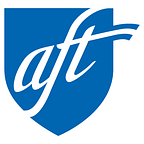Where has the revenue gone?
North Dakota’s Legislature has steadily decreased tax rates, causing our current problem
By Gary Feist
Over the past eight to 10 years, North Dakota has seen tremendous growth in its economy due to the increased activity in the Bakken and in North Dakota’s number one industry, agriculture. The growth in these two industries led to an increase in general fund revenue collections and a growth in personal incomes. General fund revenues grew from $2.7 billion in 2007–09 to $5.8 billion in 2013–2015.
The oil activity out west and the statewide economic growth required increased spending on infrastructure, social services, K-12 education, higher education and other programs that continue to be a priority for the citizens of North Dakota. K-12 education, human services and higher education accounted for 69.2 percent of general fund appropriations for the 2015–17 biennium. To continue funding these priorities, the state needs strong revenues, but over the past eight years the Legislature has reduced the tax revenue by slashing tax rates.
North Dakota needs strong revenues, but over the past eight years the Legislature has slashed tax rates.
To understand why revenues are down, I need to take you back to 2008, before the merger that formed North Dakota United, when North Dakota Public Employees Association (NDPEA) and North Dakota Education Association (NDEA) joined forces to defeat Measure 2. This ballot measure asked the citizens of North Dakota if they wanted to reduce the individual income tax rates by 50 percent and the corporate income tax rates by 15 percent. Taxpayers agreed that a balanced tax structure was important and defeated the measure by a margin of 70–30.
Since the defeat of Measure 2 in November of 2008, the Legislature has passed bills reducing the individual income tax rates by 12.3 percent in 2009, 17.9 percent in 2011, 19.3 percent in 2013, and 10 percent in 2015, for a total reduction of 49.5 percent. The top corporate income tax rate has dropped by 33.69 percent, and the bottom rate by 45.76 percent.
To put this in perspective, individual income tax collections peaked in 2013 at $617 million while the North Dakota economy was booming. Now it is estimated that the 2017 individual income tax collections will only be $338 million. Corporate income tax collection peaked in 2014 at $239 million, and it is estimated that it will only generate $68 million in 2017.
A portion of the reduction in revenue is attributable to the slowing economy, but the reduction is also largely attributable to the continual reduction in the income tax rates.
The reduction in revenue is directly attributable to the Legislature not listening to the people.
On top of these cuts, the 2015 Legislature passed SB 2292, which will change the way corporate income taxes are collected in the future. Prior to 2016, a taxpayer was required to use an equally weighted factor comprised of a taxpayer’s North Dakota property, payroll and sales to its property, payroll and sales everywhere, divided by three.
SB 2292, which is being phased in over the next three years, will allow a taxpayer to make an election to use a single sales factor to determine the amount of its income that will be taxed in North Dakota. This may be down in the weeds of tax policy, but this was a gift to the multinational Fortune 500 companies that have activity in North Dakota.
If a multinational corporation has significant property in the state and is a large employer, but does not have North Dakota destination sales, it could make the election to use the single sales factor and not pay corporate income tax. This bill only created winners, because the taxpayer makes the election that enables them to pay the least amount of tax. The estimated fiscal note of this bill was $124 million, but nobody really knows how much it will cost when fully implanted in 2019.
North Dakota’s economy has slowed, which has resulted in less revenue, but the reduction in revenue is also attributable to the Legislature not listening to the people who said no to rate reductions in 2008. Now we are being told we have a spending problem, but I believe we have a revenue problem that will make it difficult for the state to fund its priorities of K-12 education, public services, and higher education.
State agencies and higher education institutions have had their budgets cut 10 percent to 20 percent, state employee salary increases are expected to be zero for the next two years, and if that wasn’t enough, it has been floated that state employees should pay 5 percent of their healthcare premium. We must make sure that the Legislature does not balance the state’s budget on the backs of public employees.
As members of North Dakota United, we need to educate our co-workers, family and friends about why revenues are down and how it will affect the funding of public services. Legislators have said all options are on the table regarding cuts, so why aren’t revenue enhancements on the table? Let’s start having the conversation about growing revenues again by passing a slight increase to the rates that have been so dramatically cut over the past eight years.
___________
Gary Feist is Vice President of Public Employees for North Dakota United. You can reach him at gary.feist@ndunited.org.
